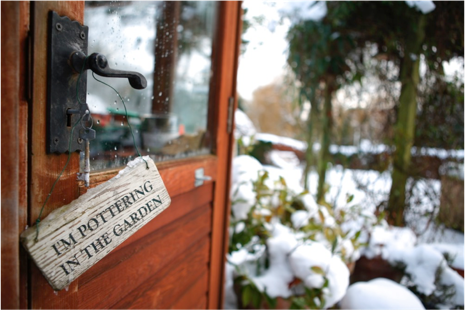Understanding the Type of Soil You Have in Your Garden Will Help Your Garden Grow
Identifying the kind of soil you are dealing with and being aware of the characteristics of different kinds of soil will help you determine whether it will be a good host to your plants and flowers, and if not, what you can do to rectify this.
There are five main types of soil that gardeners can expect to find on their land. Testing which kind of garden soil you have can be done by looking and feeling the soil, and also by seeing how much water it holds.
Sandy Soil
Sandy soil can spell trouble for your garden. It contains large particles, has trouble retaining moisture and feels dry and gritty to the touch.
Not being able to hold moisture is a problem if you are trying to grow plants and flowers – as naturally they need to be able to suck up water and nutrients from the soil in order to flourish.
The gaps that are created between the large particles means water drains straight through the soil making it extremely difficult for roots of the plants, particularly young ones, to reach it.
There are some good sides to sandy soil for a gardener however. The consistency of the soil means it heats up easily creating a mild and warm environment which plants appreciate, and it is light and easy to work with too.
If you have sandy soil you will be able to tell by adding water to it and trying to roll it into a ball, if you cannot do this and the soil reminds crumbly, the soil is sandy.
Silty Soil
Silty soil feels smooth and silky to the touch. This is a reasonably fertile soil, though still can’t hold as much moisture as one would hope for in an ideal garden climate.
Because of its smaller particles it is easy for silty soil to become compacted, which can result in poor aeration -aeration is important for water and nutrients to be easily absorbed into the soil.
Clay soil
Clay soil has the smallest particles of these three, and has a sticky feel when moist, though smooth and silky when dry.
Because of its small particles, its water retention is good. However, this also means that compaction is an issue and if water cannot easily pass through the soil it can become logged if there is heavy rainfall.
It can also be hard to manipulate if the weather becomes very dry so it is important to keep turning it over in the warmer summer months.
Saying that, clay soil is one of the most beneficial for your garden. It is slow draining, which means it will hold onto nutrients better which your plants can then feed off, resulting in more successful plant growth.
Peaty soil
Peaty soil has a rich dark brown colour and feels soft to the touch when dry, and spongy when wet.
Peaty soil holds plenty of organic matter and retains water easily which makes it a useful option in the warmer months as it will hold water, yet also protect your plants roots when heavy rain is experienced.
Peaty soil is often used to help pH levels in soil and control diseases too.
Saline Soil
Saline soil is usually found in very dry regions so is unlikely to be found in the average UK gardeners home!
Saline soil is very damaging to plants due to its high salt content which prevents water uptake by plants. If you have saline soil you are likely to notice a white layer on the surface of your garden soil.
So which kind of soil is best for my garden?
For general gardening the ideal soil type for gardeners is actually a combination of silt, sand and clay soil.
This soil is known as loam soil. Loam soil retains moisture while also draining well and is also easy to manipulate and keep aerated.
If you don’t have loam soil in your garden do not despair! You can help treat your soil with a good soil conditioner, or by adding a layer of nutrient rich topsoil to your garden to give it a boost and help your garden plants to flourish!
Bury Hill has a huge range of premium grade soils to suit any garden and gardener. If you would like to discuss your needs, why not give our friendly and knowledgeable team a call on 01306 877 540?
















